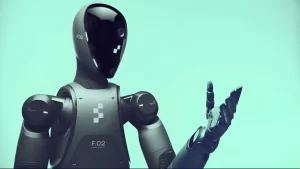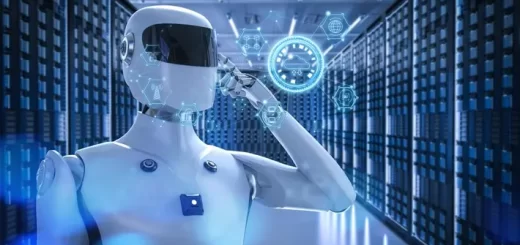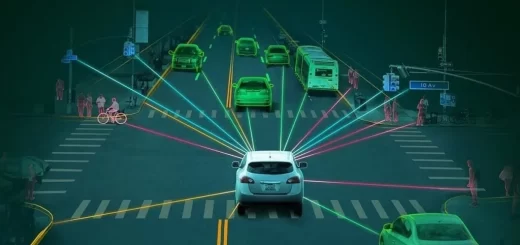Figure 02 robot review, advantages, disadvantages, features and Is the Figure AI robot real?
The Figure 02 robot is developed by Agility Robotics, It represents an innovative leap in humanoid robotics tailored for industrial environments. It is designed to perform physical labor, and specifically addresses tasks in logistics, warehousing, and supply chain management, making it a valuable asset in facilities that handle goods and materials.
Figure 02 robot
The Figure 02 robot, developed by Agility Robotics, is designed to perform a range of tasks traditionally handled by humans, such as lifting, carrying, and placing items. This humanoid robot is particularly focused on aiding in industries like logistics and warehousing, where automation of physical labor is highly beneficial.
Figure 02 robot presents a powerful tool for industries looking to improve efficiency, safety, and operational flexibility. However, it brings challenges related to cost, adaptability, and workforce impacts. As technology advances, it may become more versatile and accessible, potentially addressing some of these limitations.
Features of Figure 02
Figure 02 has a two-legged design that enables it to navigate environments built for humans, including stairs, narrow pathways, and uneven surfaces. Its human-like form allows it to work effectively in spaces that are typically challenging for wheeled robots.
Figure 02 robot is built for heavy lifting and carrying tasks, ideal for environments like warehouses where it can move packages, boxes, and other inventory items efficiently. It is capable of handling weights that might otherwise require multiple human workers or additional equipment.
Figure 02 robot is equipped with advanced sensors, cameras, and AI, Figure 02 can navigate dynamic environments autonomously, recognizing and avoiding obstacles, adjusting to changing layouts, and following paths set by supervisors. Its AI also allows it to understand the environment and follow commands without requiring constant human intervention.
Figure 02 robot has a battery that supports long operational hours, making it suitable for round-the-clock tasks in high-demand environments. With a reduced need for breaks, it can maintain consistent productivity levels.
Figure 02 robot collects real-time operational data through its sensors, which can help optimize workflows. This data can be used to improve efficiency and inform management decisions on warehouse layout or task prioritization. Figure 02 robot can work in environments where human safety could be compromised, like high-temperature zones or areas with heavy chemicals, without the risk of injury.
Figure 02 robot has a modular design, meaning parts of it can be upgraded or replaced as needed, making maintenance and updates easier over time. This approach helps keep the robot relevant as technology advances and new features are developed.
Figure 02 robot provides consistent performance, especially for repetitive tasks like loading and unloading, eliminating the variability of human labor. Its bipedal locomotion and agility make it well-suited for environments designed for humans, unlike wheeled robots, which are restricted to flat, obstacle-free surfaces.
Figure 02 robot is a highly effective solution for high-demand logistics and warehousing environments, where repetitive lifting and carrying are common tasks. Its design for mobility, strength, and endurance makes it a strong choice for operations looking to reduce labor strain, improve efficiency, and mitigate risks in hazardous settings. With more development and cost-effective deployment, it could become increasingly accessible and valuable across diverse industries.
Advantages of Figure 02 robot
Figure 02 has a bipedal design that enables it to navigate environments built for humans, such as stairs, narrow aisles, and uneven surfaces. Its agility makes it highly adaptable to a range of industrial settings, as it can operate in spaces not suited for wheeled robots.
Figure 02 robot can perform physically demanding, repetitive tasks, such as lifting and carrying heavy items, which reduces the need for human labor in these strenuous roles. It provides a solution for labor shortages, especially in warehousing and logistics sectors.
Figure 02 can perform tasks in environments that may be hazardous to humans, such as extreme temperatures or dangerous chemical exposure. By handling these risky tasks, the robot minimizes potential workplace accidents and injuries.
Once deployed, Figure 02 robots can work continuously, which is advantageous for industries that require 24/7 operations. They can be added to a workforce as needed, helping companies manage peak workloads without hiring additional temporary labor.
Figure 02 robot is equipped with sensors and AI capabilities. Figure 02 can collect data during operations, helping optimize tasks over time. Insights from this data can help improve efficiency, refine processes, and reduce resource consumption in real time.
Disadvantages of Figure 02
The investment required for purchasing and integrating Figure 02 robots can be substantial, making it challenging for small businesses or those with limited budgets. Maintenance, software updates, and potential repairs add to ongoing costs. Managing and troubleshooting Figure 02 requires some technical understanding, and companies may need to train staff to handle the robot effectively.
Deploying Figure 02 robots in existing workflows may require significant adjustments in infrastructure, including layout changes and software integration. Training staff to operate or troubleshoot these robots can take time and may require specialized knowledge.
While Figure 02 excels at physical tasks like lifting and carrying, it may struggle with more intricate or detail-oriented tasks that require fine motor skills. Its current functionality is relatively task-specific, and adapting it to other roles could be challenging without significant reprogramming or hardware modifications.
Figure 02 relies on AI for navigation, object recognition, and decision-making, which may not be foolproof and can result in errors, especially in complex environments. Unexpected situations or changes in the workspace may lead to errors or require human intervention.
The deployment of humanoid robots like Figure 02 raises concerns about job displacement, especially in industries heavily dependent on physical labor. As robots take on more tasks, there may be fewer opportunities for entry-level jobs, potentially impacting the workforce and local economies.
The cost of implementing Figure 02 can be high, including both the purchase and the integration into existing systems. Small to medium-sized businesses may find it cost-prohibitive. Figure 02 is built primarily for tasks that involve carrying and lifting, meaning its versatility is limited in settings where fine motor skills or varied tasking are required.
You can follow science online on YouTube from this link: Science online
Top trending topics on Emo robots and What can Emo do?
Fun facts about Emo robot pets and will your best friend be a robot?
Ameca robot review, features, advantages, disadvantages and What can Ameca Do?
Eilik Desktop Companion Robot structure, features, use, advantages and disadvantages
Humanoid robots use, types, risks, advantages, and disadvantages
Sophia robot review, features, use, advantages and disadvantages




